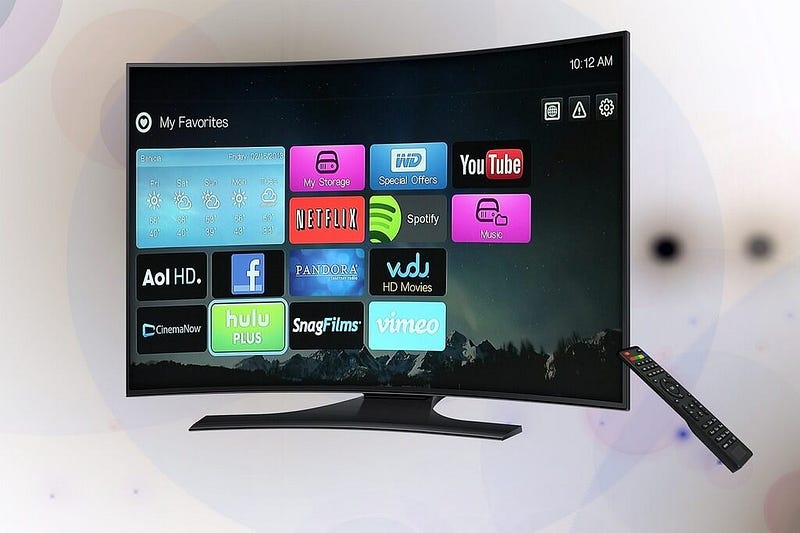The Fascinating Evolution of Television: From Inception to Impact
Written on
Chapter 1: The Birth of Television
Television, a cornerstone of modern life, boasts a rich and intricate history. Its evolution is a captivating story filled with creativity, experimentation, and the blending of various technological breakthroughs. Although it seems commonplace today, the path to the creation of television was anything but straightforward.

The Initial Sparks of Innovation
The narrative of television's creation can be traced back to the late 19th century, when inventors and visionaries began to explore the transmission of moving images. Among the earliest pioneers was Paul Nipkow, a German engineer who patented the Nipkow disk in 1884. This rotating, perforated disk scanned images line by line, laying the groundwork for what would eventually evolve into television. However, Nipkow's creation was merely a precursor in the advancement of this revolutionary technology.
Key Developments in Mechanical Television
The early 20th century marked significant progress in mechanical television, primarily due to inventors like Charles Francis Jenkins and John Logie Baird. Jenkins, an American innovator, is credited with transmitting the first moving silhouette images in 1923 via a mechanical system. Despite his groundbreaking work, mechanical television faced challenges, including the need for bright lighting and the production of low-resolution images.
Simultaneously, British inventor John Logie Baird achieved a remarkable feat in 1925 by transmitting the first recognizable human face on television. His method employed a rotating disk with tiny holes to capture and transmit images, showcasing television's potential as a medium for visual communication.
The Rise of Electronic Television
While mechanical television represented an important milestone, a more sophisticated and efficient technology was essential to make television accessible to the masses. This led to the transition from mechanical to electronic television, a shift that revolutionized the medium.
Vladimir Zworykin, a Russian-born inventor who later moved to the United States, played a pivotal role in this transition. Often dubbed the "Father of Television," Zworykin developed the iconoscope, an electronic camera tube crucial for transmitting images. In 1923, he patented the iconoscope, which converted light into electrical signals, enabling the transmission of electronic images. This advancement laid the foundation for the electronic television we know today, offering superior image quality and setting the stage for the commercialization of television.
The Rivalry Among Inventors
The competition to refine and commercialize television technology intensified in the 1930s, particularly between RCA (Radio Corporation of America) and Philo Farnsworth's company. Farnsworth, an American inventor, had been developing his electronic television system since his teenage years. In 1927, at just 21 years old, he successfully transmitted the first fully electronic television image, a simple straight line. Over the following years, he continued to enhance his invention, ultimately securing a patent for the first fully functional electronic television system.
However, RCA, under David Sarnoff's leadership, was determined to dominate the television market. In 1939, RCA unveiled its fully electronic television set to the public at the New York World’s Fair. Although Farnsworth held patents for his innovations, RCA's extensive resources and influence allowed them to gain significant recognition.
The rivalry between Farnsworth and RCA highlighted the complex nature of invention and innovation. While Farnsworth's contributions were crucial, corporate power significantly impacted the narrative surrounding the invention of television.

Television: A Collective Creation
Though figures like Nipkow, Baird, Zworykin, and Farnsworth are prominent in television's history, it's vital to acknowledge that television's invention was a collective effort. The evolution of this technology involved numerous inventors, engineers, and scientists, each building on the achievements of those before them. Inventions rarely stem from a singular "Eureka!" moment; rather, they emerge from incremental advancements and collaborative endeavors. The transition from mechanical systems to electronic marvels exemplifies this evolutionary journey.
The Societal Influence of Television
Television's invention not only transformed how we consume information and entertainment but also significantly influenced society. The ability to transmit moving images across vast distances fostered global connectivity. Television emerged as a powerful medium for cultural exchange, shaping public opinion and influencing societal norms.
As television technology continued to advance, the medium expanded beyond entertainment to include educational programs, news broadcasts, and documentaries, solidifying its role as a vital information dissemination tool.
The Continuous Transformation of Television
From the Nipkow disk to today's high-definition flat screens, television has experienced remarkable transformations. The invention of television is not a singular event but a narrative shaped by the creativity of countless individuals across various eras and regions.
As we enjoy the comforts of modern television, it is essential to recognize and appreciate the innovative spirit that has driven its evolution. The story of television's invention serves as a reminder that progress is a collective endeavor fueled by the relentless pursuit of knowledge and the desire for positive change.

In conclusion, the invention of television stands as a testament to human ingenuity, determination, and the unwavering quest for technological progress. From early mechanical systems to sophisticated electronic devices, television remains a remarkable achievement that continues to shape our world. The roots of television are firmly embedded in the past, yet its journey into the future of visual communication is ongoing.
If you enjoy reading stories like these, then subscribe and follow for more.
Chapter 2: Insights from Inventors
The first video showcases the history of television's invention, detailing who created the first TV and how it evolved over time.
The second video tells the inspiring story of a teenager from Idaho who played a crucial role in the invention of television, highlighting his contributions and challenges faced.